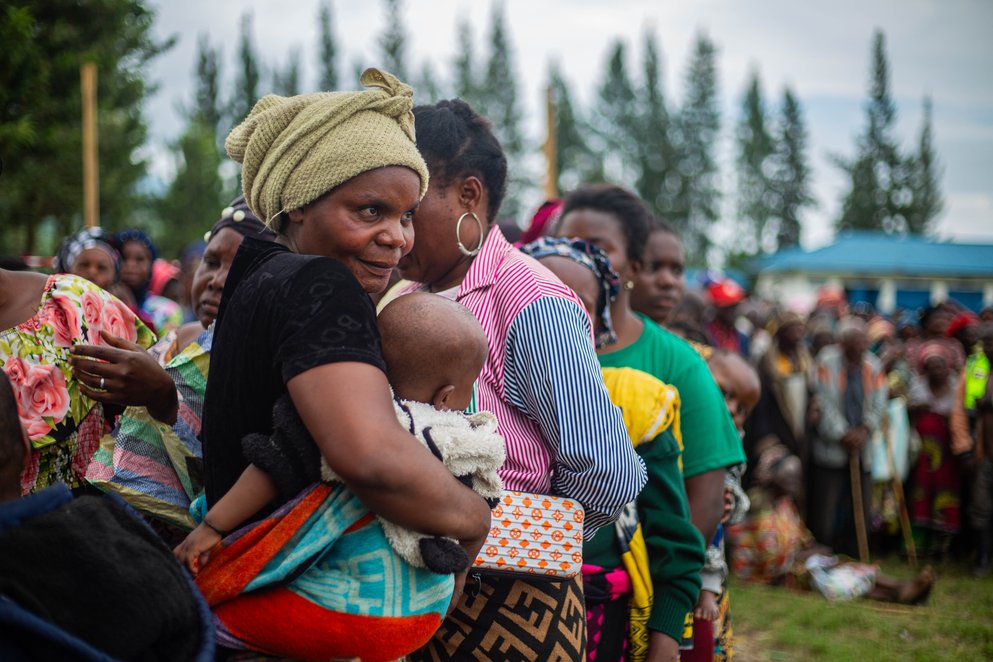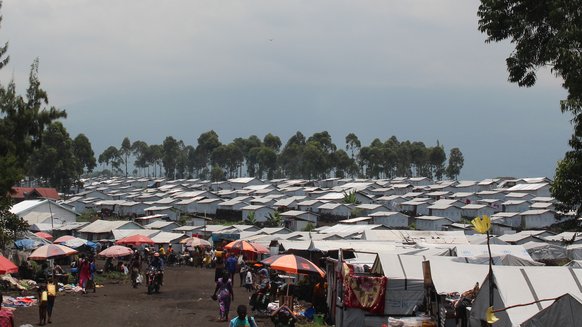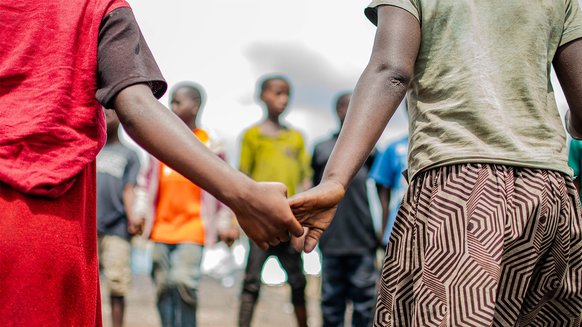In Eastern DRC, Children Are Caught in a Crisis That Risks Being Forgotten
July 16, 2025

Fighting has continued in several areas across the region, and new displacements are reported every week. At least 850,000 people have been newly uprooted this year alone – around half of them children.
“I had nothing”
Grace, a 16-year-old, was separated from her parents when violence swept through her village earlier this year. “We fled the war,” she says. “That’s how I got separated from my parents.”
Through the identification, documentation, tracing and reuniting network, War Child staff have supported Grace. Our team and partners helped place her with a transitional foster family in Kibumba.
“They’ve been taking care of me ever since,” she says. “Before that, I had nothing. Not even another dress to wear.”
Alongside psychosocial support, Grace received a household kit as part of War Child’s emergency assistance. This kit included clothes, shoes, a mattress and blanket, soap, and sanitary pads.
“For a girl, these things are essential,” she explains. “I had no clothes, no underwear, not even soap to wash myself. I was given everything, I received everything. Today, I dress well and I can wash myself properly.”
She is one of more than 70 unaccompanied and separated children who have received help from War Child so far this year. Our staff and partners continue to trace families and work toward reunification wherever possible.
“We are tracing families, one by one.”
Rosette Mangaza, part of War Child’s child protection team, is part of the network identifying and supporting children who have been separated from their families.
“There are so many children who are alone,” Rosette says. “Some are staying with foster families, others are still waiting to be placed. We are tracing their families, organising mediation, and reuniting them when we can.”
She’s seen the impact of the conflict firsthand. “Many people have returned to their villages, but they’ve found their homes destroyed, their fields ransacked. They have nothing.”
Still, Rosette remains hopeful that what War Child is doing is making a different for individual children and families. “With this project, we’re supporting these children, and helping their host families. But we need more support. Many of the children really have no one.”
Returning to the unknown
Meanwhile, communities once scattered by violence are now returning to their former villages, only to find almost everything they left behind destroyed or looted.
Isaac Rwambakumba, War Child’s emergency response coordinator, explains the broader picture. “There is an acute crisis,” he explains. “Thousands of people have been displaced. Some fled to Goma, but as fighting reached the city, they returned to villages that were already destroyed.”
For these returnees, while they may have come home, they are starting from scratch again.
In early April, War Child distributed 1,260 non-food item kits, reaching over 7,500 people in areas like Kirotche and Bweremana. These kits included bedding, kitchenware, and hygiene items – essentials for families starting over with nothing.
Alliance, a pregnant mother of two, was among the returnees. “I lost everything when I fled,” she says. “Even the kitchen utensils. During the war, we lost it all.”
Now back in her village, she’s doing what she can to prepare for the new baby. “This kit will help me prepare food safely and keep out the cold,” she says. “Now I can save my money for when the baby comes.”
Like many others, Alliance returned to a community with no support system left. There are no services, no functioning economy, and no real shelter. And while much more is needed, these kits are valuable.
“These kits are not just items,” Issac explains. “They help people begin again. They support resilience. And they’re a first step away from dependence on humanitarian aid.”
Safety, support, and a sense of normalcy
Across North and South Kivu, War Child is running eight child-friendly spaces, where more than 7,000 children have already received psychosocial support and protection services. Play-based activities, group sessions, and mental health care help children process trauma and regain a sense of normalcy.
In education, War Child is helping children get back to learning through catch-up classes, teacher training, school rehabilitation, and learning kits. Nearly 18,000 children have returned to school thanks to these efforts, even as many still study in temporary spaces.
But despite these efforts, gaps remain. Education and mental health are among the most underfunded sectors in the DRC crisis, despite being essential for recovery.
“We will always stand by the population.”
Despite severe constraints on access, Isaac, Rosette and the War Child team and its local partners in DRC remain committed to supporting children and families.
“We will always stand by the population, and we will always work to raise support so that they can address their own needs,” says Issac.
Because though there is suffering, there is also resilience among children like Grace, mothers like Alliance, people across eastern DRC and the teams who work every day under enormous pressure to ensure people are safe, connected and dignified.
But this crisis is far from over.
Even with a ceasefire, the guns have not gone silent. Children are still being displaced. Families are still being separated. And the needs are only growing.

